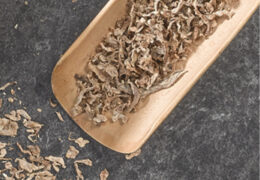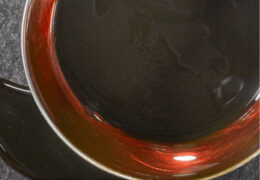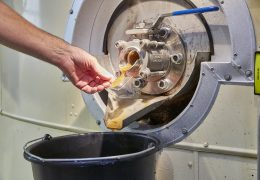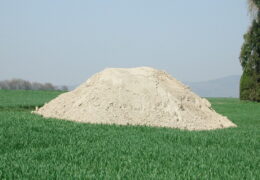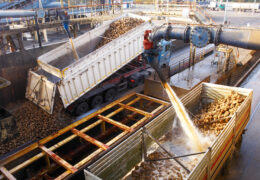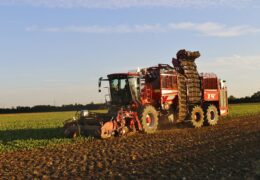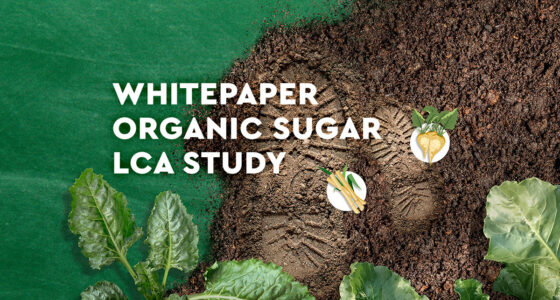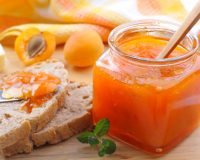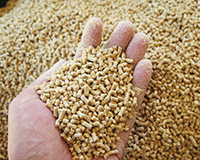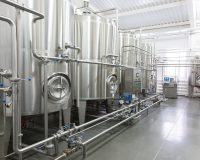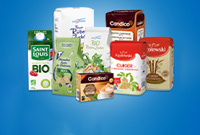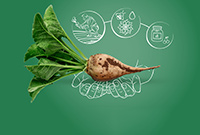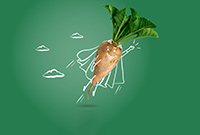The Sugar Beet –
A Sustainable All-Rounder Plant
The sugar beet is a real all-round talent that offers many solutions in addition to its sugar content. As all parts of the plant (sugar beet pulp, thick juice, water, leaves, etc.) can be used or valorised, it is a very efficient, sustainable crop.
Sugar Beet: A Highly Efficient Crop
Sugar beets consist of a very high amount of sugar. The sucrose content of the beet is typically around 18-20% when the beet is harvested in autumn, depending on the weather conditions during growth.
In addition to the sugar content, the beet also contains 75% water. The remaining percentage is made up of proteins, cell wall polysaccharides, minerals, and fibre.
All parts of the sugar beet plant can be valorised. For example, during cultivation, its large leaves ensure that a lot of O2 is released into the atmosphere and the long roots absorb nitrogen. When harvested, the leaves remain on the ground and as green manure. Furthermore, the water contained in the beet is recovered in the production process and reused to clean the crops. Also, the carbonation lime, which remains after filtering off non-sugar impurities during the beet sugar production, is then returned to the field for fertilization. Sugar beet uses are numerous, but let’s start at the beginning …
100% Natural Source of Sugar
Beet sugar is produced naturally during the process of photosynthesis in the sugar beet. Under the influence of the energy of sunlight and with the help of chlorophyll of the large leaves, sugar beets convert absorbed water from the soil and carbon dioxide from the air into the organic substance sugar.
The sugar first is used for the plant growth and then stored in the beet body serving as a reserve for the coming flowering year.
The sugar type is sucrose, a disaccharide which is directly and naturally produced in the beet. Apart from sugar cane, in other plants sugar is usually first stored as a long-chain compound such as starch. In the further processing stage, the sucrose of the sugar beets can therefore be easily dissolved out of the cells and be processed further.
Locally Grown Beets / Regional Cultivation and Processing
Compared to sugar cane, which is mainly grown in tropical countries, the sugar beet is cultivated in more temperate latitudes like Europe.
Our Südzucker sugar beets are grown regionally in Germany, France, Poland, Moldova, and Belgium. Also, the processing of the plants takes place locally. In this way we can assure short distances between the beet fields and sugar factories. The average distance between the beet fields and the factory in Germany for example is 50 km, ensuring good transport balance and flexibility.
Our organic beet sugar is also locally grown and produced in Germany. The fields of our farmers are close to our production facility in Rain/Bavaria in Southern Germany – about 80% of our organic sugar beets are grown in Bavaria (crop year 2022). For more information about our Organic Beet Sugar click here.
Sustainable Sugar Beet Cultivation
As sugar beets have been cultivated for many years, their cultivation and processing have already been greatly optimized and much is still being done to make sugar beet growing even more sustainable. Moreover, in our cultivation, we only use non-GMO sugar beet plant variants. In agricultural research for example, resistance to diseases and pests has been and is still being optimized through research and breeding of special beet varieties in order to reduce harvest losses, the use of pesticides and to adapt crop cultivation to climate change. We aim to actively solve the challenges of our farmers and improve on-field work by testing new innovative methods to improve weed control, fertilization, crop protection, biodiversity, and digitalisation. Read more about our agricultural research.
During cultivation, the sugar beet plant also has several ecological advantages:
- Efficient water consumption: Due to its up to 2m long roots, sugar beets reach deep into the soil and can therefore utilize water and nutrients very efficiently.
- Soil fertilizer and protector: The branched long roots also loosen the soil and thus promote soil fertility. Being planted in rotation every 3 to 4 years, this is why they play an important role for a successful crop rotation. In addition, because of the deep root system and the long vegetation period sugar beets are able to optimally absorb the nitrogen bound in the soil and thereby prevent nitrate pollution of the groundwater.
- Need-based fertilization and crop protection: Fertilization and crop protection of sugar beets is adapted very well to its nutrient and plant protection requirements and are therefore only applied in a precise and need-based manner. Aligned to integrated agriculture, Südzucker supports this by conducting regular soil analyses together with our farmers and our subsidiary Bodengesundheitsdienst- (our Soil Health Service) . Furthermore we are putting big effort into researching and testing new methods for plant protection, modern technologies, applications or robotics to make sugar beet cultivation even more environmentally friendly. For this we established our own research farm in Kirschgartshausen, Germany.
Full Valorisation: the Many Uses of Sugar Beet
Besides sugar production, for which it is mainly known, the sugar beet has many other uses in different areas. Nearly no waste is produced during sugar production. Every single part of the sugar beet crop is valorised and used to produce co-products like animal feed (for bees, cows, pigs, horses, etc.) in the form of sugar beet pulp pellets or molasses, fermentation additives, fertilizer, bioethanol, biomethane or even bioplastic.
Finally, the sugar beet is an all-round talent from which many useful raw materials ans uses can be obtained for humans as well as for animals. In addition to regional growing in Europe and its naturally sustainable cultivation the whole beet is utilized and valorised without producing waste supporting a circular economy.
In the end, the extracted beet sugar is essential for a natural sweetness and taste in food. However, apart from its sweetening function, it also has many other sensory and techno-functional properties in processed foods, in contrast to other artificial sweeteners.
Get in Touch
Are you interested in our organic certificates or product specifications? Do you want more information on organic market trends and consumer needs?
Do you have further questions or need support to select the right organic product?


